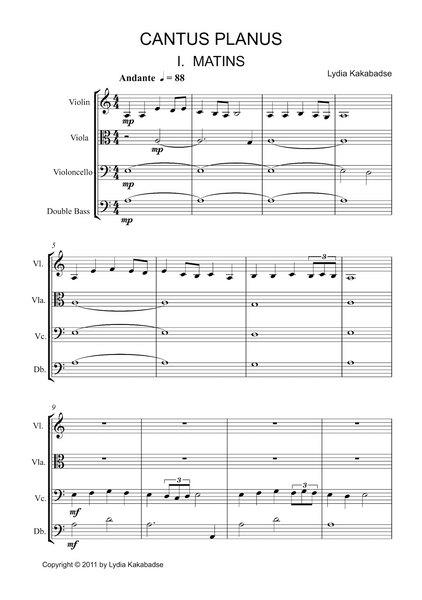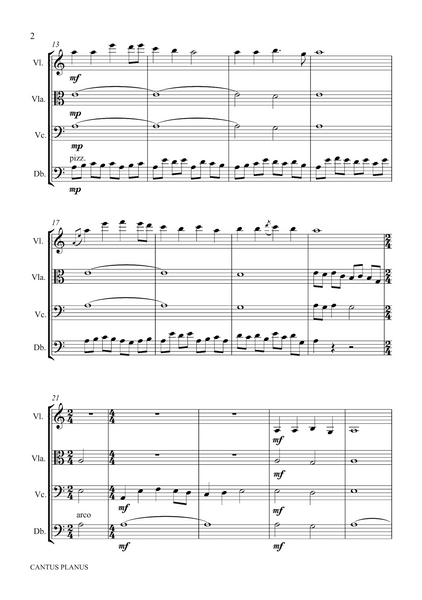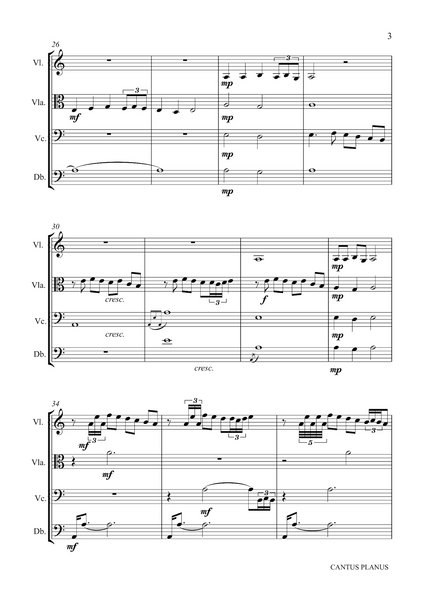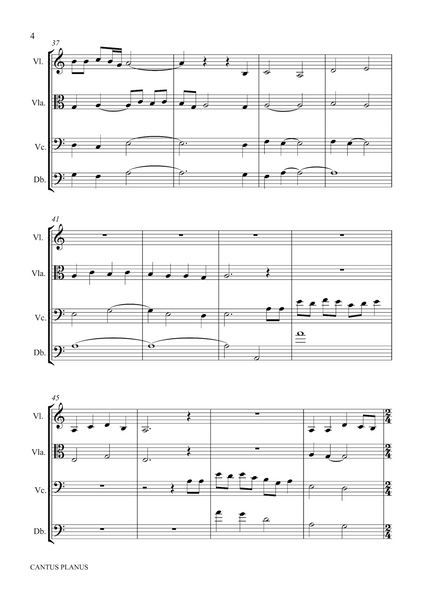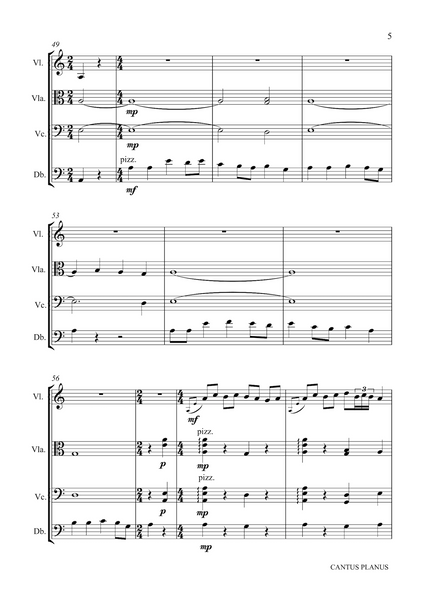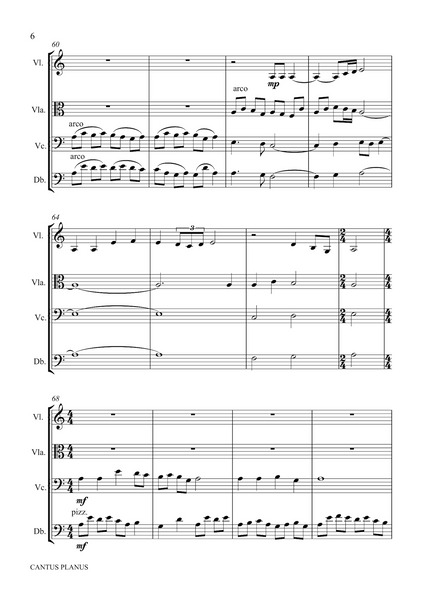Lydia Kakabadse: Cantus Planus – for “alternative” string quartet (NXP080)
This is a sheet music edition of Cantus Planus by the composer Lydia Kakabadse.
Sheet music for “alternative” string quartet (violin, viola, cello, double bass)
Duration: ca. 12 minutes
Score: 23 pages
Parts: 20 pages
Preface and Programme Notes
Composed in the Aeolian mode for violin, viola, cello and double bass, Cantus Planus (meaning plainsong) is made up of 3 movements representing certain canonical hours of prayer. The work was completed in 2011 and inspired by medieval style music and also, in part, Greek Orthodox Church music. Shortly after finishing the first movement, my mother passed away and that dark and melancholy time, no doubt, adds to the already sombre mood of this work.
1st movement – matins
Matins, which is the first of the seven canonical hours of prayer, takes place in the very early hours of the day. The piece opens with the main theme announced by the violin playing in its lower register and later taken up by each instrument in turn, following which the lower strings alternate with the upper strings in antiphonal style. The solemnity of the movement is reflective of the hour at which Matins is usually celebrated.
2nd movement – lauds
Lauds (meaning praises) is the office of daybreak. It is a jubilant hour when nature awakens and the sun is heralded in, as represented by the upward movement from lower to upper strings and the quickening of rhythmic notation from crotchets to quavers to semi-quavers. An 8 semi-quaver phrase alternates in antiphonal style, firstly between the violin and cello and then between the violin and viola. This phrase is greatly extended by the bass, which displays its technical ability performing a fast pizzicato passage, above which the viola and cello engage in antiphonal playing.
3rd movement – vespers
Celebrated at sunset, Vespers (or evening prayer or evensong) give thanks for the day that has just gone. The celebratory theme, announced first by the viola and then taken up by the violin and cello, makes its appearance throughout this movement. The semi-quaver phrase from the 2nd movement is extended melodically and rhythmically to provide a secondary theme, which is introduced by the viola and later taken up on the violin. Playing pizzicato, the bass repeats the original semi-quaver phrase, which is varied by the cello as the piece is brought to a close.







